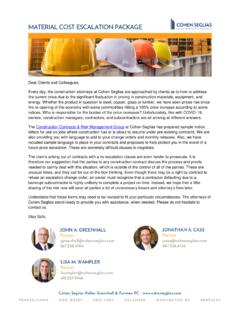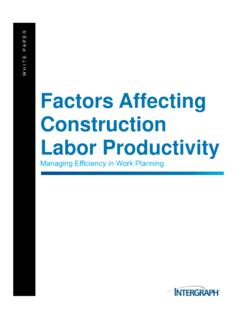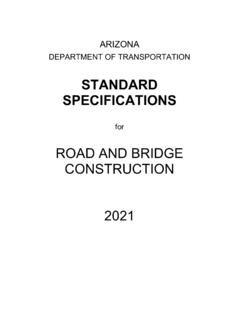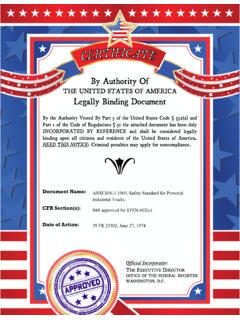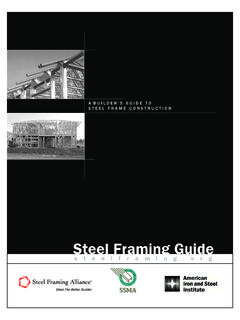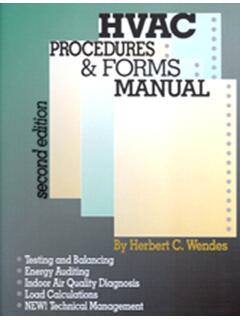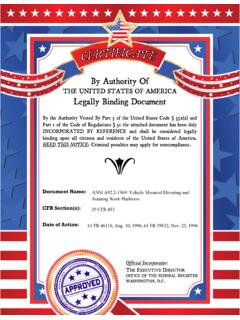Transcription of MCAA Guide to Pressure Testing Safety
1 Guide TO Pressure Testing Safety Guide to Pressure Testing Safety 2013, mechanical Contractors association of america , Inc. All rights reserved. 1 Application This Guide applies to the Pressure Testing of standard metal piping systems, excluding cast iron systems. It does not apply to: Cast iron piping systems; Fiberglass piping systems; Plastic piping systems; PVC piping systems; or CPVC piping systems. Forward MCAA receives frequent requests for information about how to safely perform Pressure Testing . There are several excellent piping standards that address Pressure Testing with a liquid under Pressure (hydrostatic Testing ) or air or another inert gas under Pressure (pneumatic Testing ). The standards are published by the American Society of mechanical Engineers (ASME), and those most frequently used by mechanical construction firms include: ASME Power Piping ASME Process Piping ASME Refrigeration Piping and Heat Transfer Components ASME Building Services Piping Pressure Testing is a very small part of each of these standards.
2 For example, ASME 2012 Power Piping covers the Testing procedures for hydrostatic and pneumatic tests in only two pages. The emphasis is on the process of Pressure Testing , rather than on Pressure Testing Safety . To bridge the gap, this publication focuses on safe work practices designed to help prevent worker injury during hydrostatic and pneumatic Testing of non-cast iron metal piping systems. Disclaimer This Guide is intended to provide the user with basic safe work practices for Pressure Testing standard metal piping systems that are not made of cast iron. It is not intended to provide exhaustive treatment on the subject of metal piping system Pressure Testing Safety , and it should never be used as a substitute for reading and complying with the most current, applicable ASME piping standards and piping system component manufacturers recommendations/specifications. Further, it is not intended to provide Guide to Pressure Testing Safety 2 2013, mechanical Contractors association of america , Inc.
3 All rights reserved. legal advice. Employers must make independent determinations regarding the need for legal assistance. Introduction Safely Pressure Testing piping systems can be challenging at times. However, much of the time the procedures are routine and can be accomplished with minimal risk to workers. The keys to safe Pressure Testing are knowing the potential hazards and understanding how to eliminate them, or at least how to minimize them as much as possible. Hydrostatic Testing is the preferred method of Testing because it generates considerably less stored energy and thus involves less risk to workers. In this type of Testing , a liquid, usually water, is pumped into the system before it is pressurized with air or gas. Water can t be compressed like the air or gas used by itself for pneumatic Testing , so considerably less stored energy is generated. While there are still hazards associated with hydrostatic Testing , MCAA recommends the use of hydrostatic Testing over pneumatic Testing whenever possible.
4 At times, hydrostatic Testing may not be acceptable for the following reasons: The owner requires/specifies that the system be tested pneumatically; The building is complete and can t be subjected to the release of a test medium. The piping system is designed in such a way that it can t be filled with water or another liquid test medium; and The piping system will be used for a specific type of service that can t accept traces of a liquid test medium, such as high purity piping systems for pharmaceuticals or food. Pneumatic Testing is more dangerous for workers and should be performed only when hydrostatic Testing isn t acceptable for one or more of the reasons above. Pneumatic Testing generates potentially dangerous stored energy because the air or gases are easily compressed when used in the systems without liquid. To get a feel for how potentially hazardous pneumatic Testing can be, take a look at the following comparisons between the stored energy in piping systems, and the equivalent stored energy in Trinitrotoluene (TNT), an explosive that is the standard measure of strength for bombs.
5 500 feet of one inch pipe at 150 psi is equal to ounces of TNT 500 feet of two inch pipe at 150 psi is equal to 8 ounces of TNT 500 feet of six inch pipe at 150 psi is equal to 5 pounds of TNT MCAA recommends the use of pneumatic Testing only as a last resort. Guide to Pressure Testing Safety 2013, mechanical Contractors association of america , Inc. All rights reserved. 3 Table of Contents Safe Pressure Testing 4 Pressure Testing Hazards 4 Injuries from Pressure Testing 4 Common Causes of Pressure Testing Failures 5 General Pressure Testing Safety 5 Safe Work Practices for Hydrostatic Testing 8 Safe Work Practices for Pneumatic Testing 11 Appendix A Pre-Test Safety Planning Guidance 16 Appendix B Sample Hydrostatic Test Checklist 17 Appendix C Sample Pneumatic Test Checklist 19 Appendix D Sample Pneumatic Test Permit 21 Guide to Pressure Testing Safety 4 2013, mechanical Contractors association of america , Inc.
6 All rights reserved. Safe Pressure Testing Most of the hazards associated with Pressure Testing come from the sudden, unintended release of stored energy. The risk of injury from a failing joint, connection, gauge, valve, fitting or another component increases during the Testing process, especially during pneumatic Testing . Safe work practices are needed for all types of Pressure Testing in order to protect the workers performing the tests. Pressure Testing Hazards Pressure Testing hazards include: Flying objects such as valves, flanges, gauges, and fittings; Flying shrapnel such as small pieces of pipe, pipe fittings, or other system components that shatter into parts from the Pressure ; Oxygen displacement from an inert gas used for Testing ; and Flooding in areas where energized electrical sources are present. Injuries from Pressure Testing Most, but not all, injuries from improper Pressure Testing are inflicted by flying objects.
7 Some of the more obvious Pressure Testing injuries include: Puncture wounds; Eye damage; Lacerations; Broken bones; Contusions; Concussions; and Internal injuries. Less obvious Pressure Testing injuries include: Asphyxiation from the unexpected release and accumulation of inert Testing gases such as nitrogen or argon, especially in confined spaces or low lying areas; and Electrocutions from flooding in areas where energized electrical sources come into contact with a conductive liquid (usually water). Guide to Pressure Testing Safety 2013, mechanical Contractors association of america , Inc. All rights reserved. 5 Workers can protect themselves from all of these injuries when they are provided with an appropriate Standard Operating Procedure (SOP), have the proper training, including safe work practices, and carefully implement the safe work practices in conjunction with the SOP.
8 MCAA recommends that each company establish a pre-test Safety plan for each specific Pressure Testing application. All workers who will be involved in a Pressure test should be part of the pre-test Safety planning process for that particular application. Common Causes of Pressure Testing Failures Some of the most common causes of piping system failures during Pressure Testing operations include: Over pressurizing a system; Inadequate/improper Pressure Testing equipment; Poor system/component design; Operator error; Inadequate repairs/modifications to a system; Failure to properly isolate parts being tested from other parts of a system; and Failure to properly isolate equipment from the piping system being tested. General Pressure Testing Safety Now that we ve identified seven common causes of piping system failures that can occur during Pressure Testing , let s look at each of them individually to determine how best to address them.
9 Over Pressurizing a System To avoid over pressurizing a system the test Pressure has to be established. The engineer or other qualified person who will make that determination needs to know the design pressures for each component in the piping system such as gauges, valves, fittings, etc. that will be included in the test. , Design pressures for components in the system that will be isolated from the test are not considered in the calculation. Design pressures and other vital specifications, such as Testing temperatures (certain types of metal become brittle when they get cold) are provided by the manufacturers of the pipe and the other system components. Once the information is obtained, formulas are used to determine the test Pressure . Determine the test Pressure and time. Install a calibrated Pressure relief valve set to the appropriate release Pressure for all tests over 100 psi when pneumatic Testing .
10 Guide to Pressure Testing Safety 6 2013, mechanical Contractors association of america , Inc. All rights reserved. Increase the Pressure gradually according to the applicable SOP and ASME standard. Never exceed the test Pressure . Inadequate/Improper Pressure Testing Equipment Pressure Testing equipment includes items such as gauges, pumps, cylinders, hoses, connections, etc. Test equipment is considered inadequate if it is of poor quality, not designed for the maximum Pressure that it will endure, not properly calibrated, and/or not working properly. Use only test equipment that is designed and built by reputable manufacturers. Use the most current/accurate information provided by the manufacturer to ensure that the equipment is designed for your specific Pressure Testing application. Ensure that the test gauges are calibrated. Refer to the calibration stickers to ensure that the gauges have been professionally calibrated within the past 12 months.








